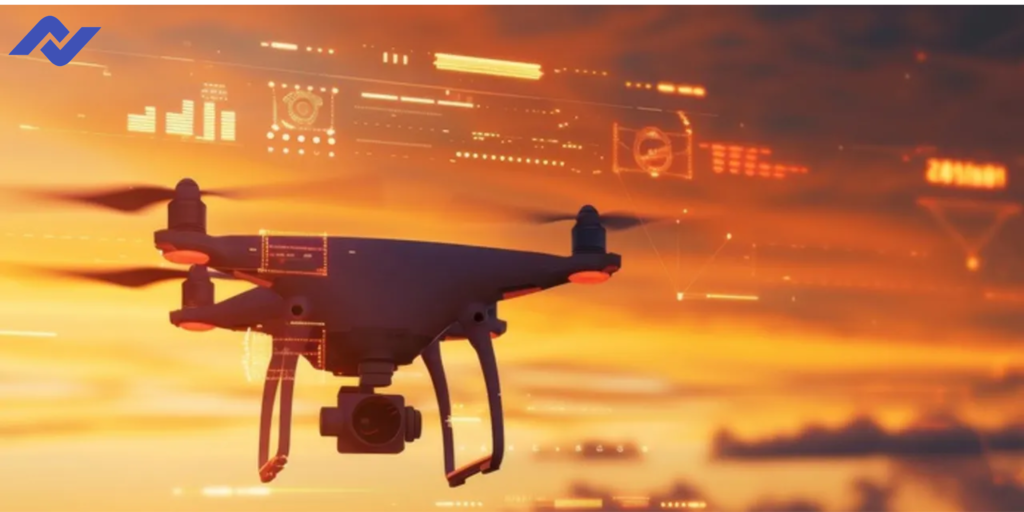Legislators need to find a balance between encouraging innovation and addressing privacy and safety concerns. Effective regulations will ensure that drones are used responsibly.

Recent advancements in edge computing and artificial intelligence (AI) have greatly transformed drone usage. By processing information locally rather than depending on distant servers, these technologies enhance the intelligence and capability of drones. As a result, drones can now function in real time, even in the most remote locations.
We will collectively explore the development of drone technology, the cutting-edge advancements in AI and edge computing, and their implications across various applications.
Pradeep Kirnapure, Distinguished Engineer at Hughes Systique Corp. (HSC), observes:
“Autonomous systems have progressed significantly over the years, largely due to advancements in AI technology and edge computing. Examples of such systems include self-driving cars, warehouse robots, unmanned aerial vehicles (UAVs), and unmanned underwater vehicles (UWVs). Given the widespread use of UAVs, commonly known as drones, in both military and civilian sectors, this article focuses on drones to illustrate how AI and edge computing are driving the evolution of autonomous systems.”
Drone Technology History
The early 1900s marked the advent of basic remote-controlled aircraft, laying the groundwork for drone technology. However, significant advancements began during the Cold War. For instance, the US made notable progress with the Ryan Model 147 in the 1960s. According to Menkhoff et al. (2022), while early drones were primarily used for surveillance, they lacked the sophisticated electronics that characterize modern drones.
UAVs Utilizing Edge Computing and AI
Drones have seen significant advancements over time. By the end of the 20th century, they were capable of carrying more equipment, achieving longer flight times, and enhancing navigation systems. During this period, the groundwork for integrating AI, which would revolutionize drone capabilities, was laid. Initially, drones were mainly used for military purposes, dependent on manual control systems with limited autonomy (Dai et al., 2022).
Initial Non-Military Applications
Drone technology originated in the early 1900s with rudimentary remote-controlled aircraft. However, it remained relatively basic until the Cold War era. Notably, in the 1960s, the United States made significant strides with the Ryan Model 147. According to Menkhoff et al. (2022), early drones were primarily employed for surveillance and did not possess the advanced technology that characterizes contemporary drones.
How AI and Edge Computing Are Transforming Drones
Varinder Singh Jawanda, CEO of Millennium Automation Pvt Ltd (MAPL World), explains: “AI involves developing machines that can think and learn like humans, while edge computing refers to processing data near its source instead of sending it to a distant server. The integration of AI and edge computing creates what is known as Edge AI, enabling drones to make intelligent, real-time decisions on-site.”
Real-Time Data Processing
One of the most significant advancements in drone technology is the capability for real-time data processing. With edge AI, drones can analyze data immediately on-site rather than waiting for it to be transmitted to a remote server. For instance, in emergency situations such as natural disasters, drones equipped with edge AI can swiftly assess damage and provide critical information to rescue teams without the need for manual control.
A 2024 study published in IEEE Access notes that drones with edge computing can process data up to 10 times faster than those depending on cloud-based systems. This increased speed significantly reduces latency, which is essential for scenarios requiring prompt data analysis, such as disaster response.
Enhanced Situational Awareness
AI-powered drones with edge computing are capable of collecting and analyzing data from various sensors, including cameras and LiDAR. This enables them to better understand their environment, even in challenging or remote conditions. They can generate detailed maps, identify crucial objects, and detect anomalies, making them incredibly valuable for a wide range of applications.
Operating Without Remote Control
Modern drones have gained the ability to operate autonomously, thanks to advancements in AI and edge computing. They can navigate, avoid obstacles, and collect data independently without the need for constant human oversight. This capability is particularly advantageous in areas with poor connectivity or where manual control is impractical (OpenMind, 2024, AI and Drones).
Pillars of Real-Time Autonomous System Performance
Pradeep Kirnapure from HSC notes: “For autonomous systems like drones to function effectively in the physical world, they must perceive, analyze, and respond in real time. AI and edge computing are crucial in facilitating these capabilities.”
Analyzing: Once a drone comprehends its task, it analyzes its surroundings to plan the most efficient path, taking into account constraints such as battery life and obstacle avoidance. Onboard computer vision algorithms and machine learning (ML) models assist with object detection, recognition, and trajectory planning. AI-based Simultaneous Localization and Mapping (SLAM) techniques are used for localization in the absence of GPS.
Responding: The final stage involves executing the planned actions with minimal human input. Drones utilize advanced AI/ML algorithms and onboard computing for flight control and collision avoidance. By leveraging edge computing rather than relying on cloud servers, drones achieve rapid response times, which are critical for tasks that require split-second decisions, such as avoiding collisions.
Varinder Singh Jawanda from MAPL World remarks, “As autonomous systems like AI-driven drones continue to evolve, they offer both exciting possibilities and significant challenges.”
Technical and Ethical Issues
Despite the advantages of AI-driven drones, several challenges remain. These include technical limitations, privacy concerns, and ethical dilemmas. It is crucial to address these issues to ensure that drones operate reliably and securely while safeguarding data privacy.
Policies and Regulations
As drone technology evolves, so too must the regulations governing it. Legislators need to find a balance between fostering innovation and addressing privacy and safety concerns. Effective regulations are essential to ensure that drones are used responsibly.
Pradeep Kirnapure from HSC concludes, “AI and edge computing have significantly advanced autonomous systems, reflecting the current level of maturity, stability, and reliability. Autonomous AI is now a distinct area within the AI field, dedicated to focusing on autonomous systems.”
In conclusion, AI and edge computing have profoundly enhanced autonomous drones, enabling them to process information in real time and operate autonomously. From their modest origins to their sophisticated current applications, drones have undergone remarkable evolution. As technology continues to advance, AI-driven drones are poised to become increasingly essential across various sectors, including defense and environmental monitoring.
For more updates related to technology click on : https://inetfreak.com/



